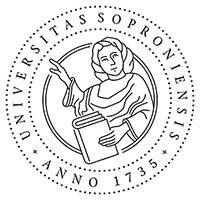Learner Responsibility and Homework Quality in Secondary EFL Blending
DOI:
https://doi.org/10.17165/TP.2017.1-2.13Abstract
The purpose of this research is to scrutinise advantages and disadvantages of blended learning both from the perspective of the learners and the teacher in a secondary EFL class. Throughout the four-week blending process, online and offline content being the same, informants did their homework through Macmillan Online Campus. Based on weekly learner feedback, an interview with the mentor teacher and post-lesson reflections of the teacher-researcher the study concluded by saying that blending results in learner awareness of higher quality homework, however does not necessarily raise learner awareness and learner responsibility. Disadvantages and advantages of MEC were also elaborated on both from the teacher’s and the learners’ perspective.
Literaturhinweise
Alshwiah, A. A. S. (2009). The effects of a blended learning strategy in teaching vocabulary on premedical students' achievement, satisfaction and attitude toward English language [Published master thesis]. Arabian Gulf University, Bahrain. [online] http://files.eric.ed.gov/fulltext/ED506107.pdf [13 May 2017]
Cheng, C., Shu, K., Liang, C., Tseng, J., & Hsu, Y. (2014). Is blended e-learning as measured by an achievement test and self- assessment better than traditional classroom learning for vocational high school students? In: IRRODL, 15 (2). [online] http://www.irrodl.org/index.php/irrodl/article/view/1708/2842 [13 May 2017] DOI: https://doi.org/10.19173/irrodl.v15i2.1708
Clark, R. C., & E. Mayer, R. (2011). E-learning and the Science of Instruction. San Francisco, CA: Pfeiffer Publishing. DOI: https://doi.org/10.1002/9781118255971
Collis, B. (2003). Course redesign for blended learning: modern optics for technical professionals. International Journal of Continuing Engineering Education and Lifelong Learning, 13(1/2), pp. 22-38. DOI: https://doi.org/10.1504/IJCEELL.2003.002151
Driscoll, M. (2002). Blended Learning: Let's get beyond the hype. [online] http://www-07.ibm.com/services/pdf/blended_learning.pdf [13 May 2017]
Goodman, J. (2010). Student authority: Antidote to alienation. [online] http://repository.upenn.edu/cgi/viewcontent.cgi?article=1260&context=gse_pubs [13.05. 2017] DOI: https://doi.org/10.1177/1477878510381626
Graham C. R., & Bonk, C. J. (2005). Handbook of Blended Learning: Global perspectives, Local designs. San Francisco: Pfeiffer Publishing.
Hockly, N. & Clandfield, L. (2010). Teaching Online. Peaslake: DELTA Publishing.
Hockly, N. (2011). Integrating Technology: Eight Questions to Ask Yourself. [online] In: Journal of Technology for ELT [online] Webpage: https://sites.google.com/site/journaloftechnologyforelt/archive/july2011/ integrating-technology [13 May 2017]
Hockly, N., Dudeney, G. & Pegrum, M. (2013). Digital Literacies: Research and Resources in Language Teaching. New York, NY: Routledge. DOI: https://doi.org/10.4324/9781315832913
Khazaei, S. & Dastjerdi, H.V. (2011). An Investigation into the Impact of Traditional vs. Blended Teaching on EFL Learners' Vocabulary Acquisition: M-learning in Focus. International Journal of Humanities and Social Science, 1(15), 202-207. p. [online] http://www.ijhssnet.com/journals/Vol_1_No_15_Special_Issue_October_2011/ 24.pdf [13 May 2017]
Kim, D., Rueckert, D., Kim, D.-J., & Seo, D. (2013). Students' perceptions and experiences of mobile learning. Language Learning & Technology, 17(3), pp. 52-73. [online] http://llt.msu.edu/issues/october2013/kimetal.pdf [13 May 2017]
Lea, S. J., Stephenson, D. & Troy, J. (2003). Higher Education Students' Attitudes to Student Centred Learning: Beyond 'educational bulimia'. Studies in Higher Education 28(3), pp. 321-334. [online] http://result.uit.no/basiskompetanse/wp-content/uploads/sites/29/2016/07/Lea-et-al-2003.pdf [13 May 2017] DOI: https://doi.org/10.1080/03075070309293
Levy, M. & Stockwell, G. (2006). CALL Dimensions. Options and Issues in Computer-Assisted Language Learning. New York, USA: Lawrence Erlbaum Associates. DOI: https://doi.org/10.4324/9780203708200
Lyon-Jones, S. (2011). Teaching with Technology - A Basic Checklist. [online] http://www.edtech-hub.com/resources/techteachchecklist.html [13 May 2017]
Norman, C., & Burke, M (2010). Learning Effectiveness Using Different Teaching Modalities. American Journal of Business Education, pp. 65-76. [online] http://files.eric.ed.gov/fulltext/EJ1058308.pdf [13 May 2017] DOI: https://doi.org/10.19030/ajbe.v3i12.966
Norton, B. (2000). Identity and language learning: Gender, ethnicity and educational change. London, UK: Pearson Education Limited.
Rooney, J. E. (2003). Blending learning opportunities to enhance educational programming and meetings. [online] https://www.researchgate.net/publication/281221794_Blending_learning_ opportunities_to_enhance_educational_programming_and_meetings [13 May 2017]
Rossett, A. (2002). The ASTD E-Learning Handbook. McGraw-Hill.
Sands, P. (2002). Inside outside, upside downside: Strategies for connecting online and face-to-face instruction in hybrid courses. Teaching with Technology Today, 8(6). [online] https://www.wisconsin.edu/systemwide-it/teaching-with-technology-today/ [13 May 2017]
Sharma, P. & Barrett, B. (2007). Blended Learning. Oxford: Macmillan.
Singh, H., & Reed, C. (2001). A White Paper: Achieving Success with Blended Learning. [online] https://maken.wikiwijs.nl/userfiles/f7d0e4f0bd466199841ede3eea221261.pdf [13 May 2017]
Stanley, G. (2013). Language Learning with Technology. Cambridge: CUP. ISBN: Tomlinson, B. & Whittaker, C. (Eds.) (2013). Blended Learning in English Language Teaching: Course Design and Implementation. London: British Council. [online] http://englishagenda.britishcouncil.org/sites/ec/files/D057_Blended%20learning _FINAL_WEB%20ONLY_v2.pdf [13 May 2017]
Tosun, S. (2015). The effects of blended learning on EFL students' vocabulary enhancement. Procedia - Social and Behavioral Sciences, Volume 199. pp. 641-647. [online] http://www.sciencedirect.com/science/article/pii/S187704281504611X [13 May 2017] DOI: https://doi.org/10.1016/j.sbspro.2015.07.592
Waddoups, G., & Howell, S. (2002). Bringing online learning to campus: The hybridization of teaching and learning at Brigham Young University. International Review of Research in Open and Distrubuted Learning, 2(2). [online] http://scholarsarchive.byu.edu/cgi/viewcontent.cgi?article=1548&context=facpub [13 May 2017] DOI: https://doi.org/10.19173/irrodl.v2i2.52
Walker, A. & White, G. (2013). Technology Enhanced Language Learning. Oxford: OUP.
Ward, J., & LaBranche, G. A. (2003). Blended learning: The convergence of e-learning and meetings. [online] https://www.thefreelibrary.com/Blended+learning%3A+the+convergence+of+e-learning+and+meetings.+(In+the...-a0102274920 [13 May 2017]
Whittaker, C. (2014). Blended Learning in EFL: Adopting a Principled Approach to Integrating Technology. In A-Mahrooqi, R. -Troudi, S. (eds.), Using Technology in Foreign Language Teaching. Newcastle upon Tyne: Cambridge Scholars, 8-29. p. [online] https://www.teachingenglish.org.uk/sites/teacheng/files/D057_Blended%20 learning_FINAL_WEB%20ONLY_v2.pdf [13 May 2017]
Young, J. R. (2002, March 22). 'Hybrid' teaching seeks to end the divide between traditional and online instruction. Chronicle of Higher Education, A33. [online] http://www.chronicle.com/article/Hybrid-Teaching-Seeks-to-End/18487 [13 May 2017]
Zhang, H., Song, W., & Burston, J. (2011). Reexamining the effectiveness of vocabulary learning via mobile phones. The Turkish Online Journal of Educational Technology, 10(3), pp. 203-214. [online] http://www.tojet.net/articles/v10i3/10323.pdf [13 May 2017]
Downloads
Veröffentlicht
Ausgabe
Rubrik
Lizenz
Copyright (c) 2017 Fekete Imre

Dieses Werk steht unter der Lizenz Creative Commons Namensnennung - Nicht-kommerziell - Keine Bearbeitungen 4.0 International.












